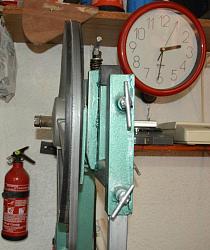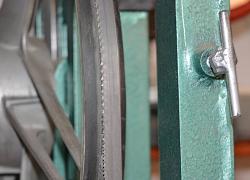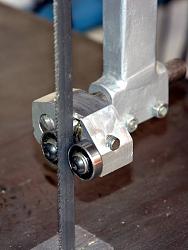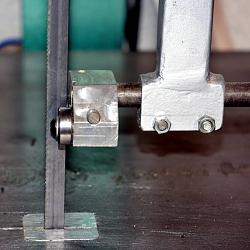When a bandsaw blade is not tight, you can get a meandering cut. I knew that. What I had not stopped to consider was exactly what was going on here. The result is this theory which awaits the considered eye of experts. It might be true but it might also be pure fiction.
If you are interested, please see
https://rick.sparber.org/SlackBlade.pdf
Your comments are welcome. All of us are smarter than any one of us.
Thanks,
Rick



 LinkBack URL
LinkBack URL About LinkBacks
About LinkBacks


 Reply With Quote
Reply With Quote








Bookmarks